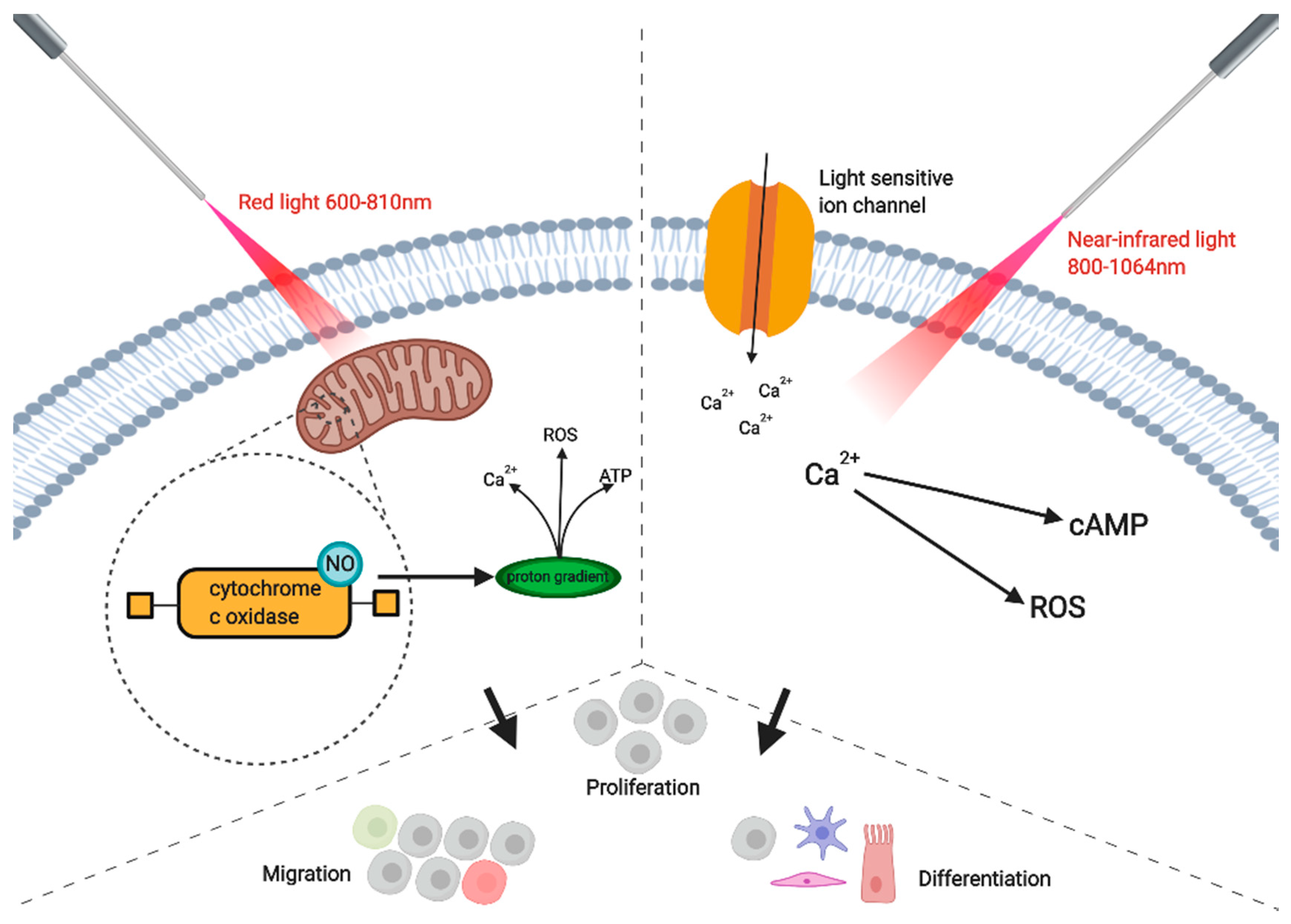Rumored Buzz on Photobiomodulation
Wiki Article
The Main Principles Of Photobiomodulation
Table of ContentsNot known Details About Photobiomodulation Not known Factual Statements About Photobiomodulation Some Of PhotobiomodulationFacts About Photobiomodulation Uncovered
Laser treatment is a medical treatment that uses concentrated light to promote a process called. During PBM, photons get in the tissue and interact with the cytochrome c facility within mitochondria. This interaction activates a biological cascade of occasions that causes an increase in mobile metabolism, which can as well as increase the healing procedure.There is agreement that the application of a healing dosage of light to impaired or useless tissue leads to a mobile feedback mediated by mitochondrial systems. Photobiomodulation. Studies have actually shown that these modifications can influence pain and swelling, in addition to, tissue repair service
Adjustments in ATP, reactive oxygen types and nitric oxide comply with light absorption by Cc, O. These impacts are redox state and dosage reliant.

Our Photobiomodulation Ideas
PBM tools have been gotten rid of for advertising by FDA through the Premarket Notification/510( k) procedure as adjunctive devices for the temporary relief of pain. These clearances were based upon the presentation of professional data to sustain such cases (Photobiomodulation). In this therapy, a light is placed near or in call with the skin, permitting the light power (photons) to permeate tissue where it engages with chromophores found in cells resulting in photophysical and photochemical adjustments that lead to changes at the molecular, cellular and cells levels of the bodyRemarkably, current research shows that light can improve efficiency in normal tissues and cells. The possible applications of PBMT are many and are being discovered experimentally at the basic scientific research, pre-clinical and professional level. The present clinical uses are for the alleviation of discomfort and swelling and the therapy of sporting activities injuries.

The therapy criteria and variety of sessions required for PBMT are dependent upon location and cause. PBMT typically needs more than one treatment for optimum discomfort relief. It might take several therapies for the outcomes to end up being apparent. reports that it can take anywhere from 8 to 30 sessions for a therapy to be completely efficient, and check that some clients find it necessary to undertake treatment two to 4 times each week.
Fascination About Photobiomodulation
Therapy parameters for PBMT were originally developed making use of cells in vitro and in tiny animal designs. These therapy criteria normally had a low irradiance and fluence and worked well for cutaneous applications. When clinicians started to use PBMT to treat frameworks that were located deeper in the body, they utilized these parameters with negative results.
We now comprehend that these negative studies resulted from wrong device and therapy specifications for transcutaneous therapy of deeper frameworks. Current advances in laser treatment devices and even more study right into the appropriate dosages have considerably boosted the outcomes of PBMT. For dealing with deep tissues, the wavelength of light made use of establishes the deepness of infiltration right into a cells.
Consequently, it is vital that a clinician utilizes the suitable wavelength of light and parameters helpful hints to treat a problem. One wavelength and one collection of treatment parameters will certainly not work for all conditions. Adverse negative effects have not been reported from the use of PBMT (Photobiomodulation). Upgraded June 27, 2016Juanita j
Light treatment is a non-invasive therapy that works by raising the capacity of the cell to develop power (ATP) to heal the location being dealt with. Therefore, it can reduce swelling, swelling, and pain in the location. Research study in this area is expanding, with even more thorough research study documents browse around this site connected below for those who would certainly like to learn more.
The Of Photobiomodulation
In the initial experiment, Dr. Endre Mester, made use of shaved rats and observing exactly how the laser affected their capacity to expand hair compared to the group that was not getting LLLT. He found that the group of mice receiving LLLT were able to grow their hair back extra quickly than the team of computer mice that really did not receive LLLT (Hoon C, et al; 2012).This therapy is described in this manner to distinguish the distinction in between the lasers some professions utilize to reduce (eg. in surgeries, or dental procedures). Low-level light treatment is pain-free, non-invasive therapy. It is made use of to lower inflammation, swelling, and persistent joint conditions, lower discomfort and speed up injury recovery of nerves and cells (Hoon C, et alia; 2012).
LLLT has a biphasic response, implying that reduced dosages are generally attended be extra advantageous than greater dosages. That being stated, doses higher or less than the ideal dose doesn't affect (Hoon C, et alia; 2012). Consequently, it can be challenging to have studies on LLLT with a lot of criteria.
Some firms combined the two (LED and laser) to offer a more well-rounded therapy since lasers can penetrate deeper than LED and infrared light (Norman Doidge, The Mind's Method of Healing, 2015). During treatment, the location that is being treated is exposed to LED light from a Biography, Flex Laser, which goes to 660 nm wavelength, adhered to by infrared light at 830-840 nm wavelength.
Report this wiki page